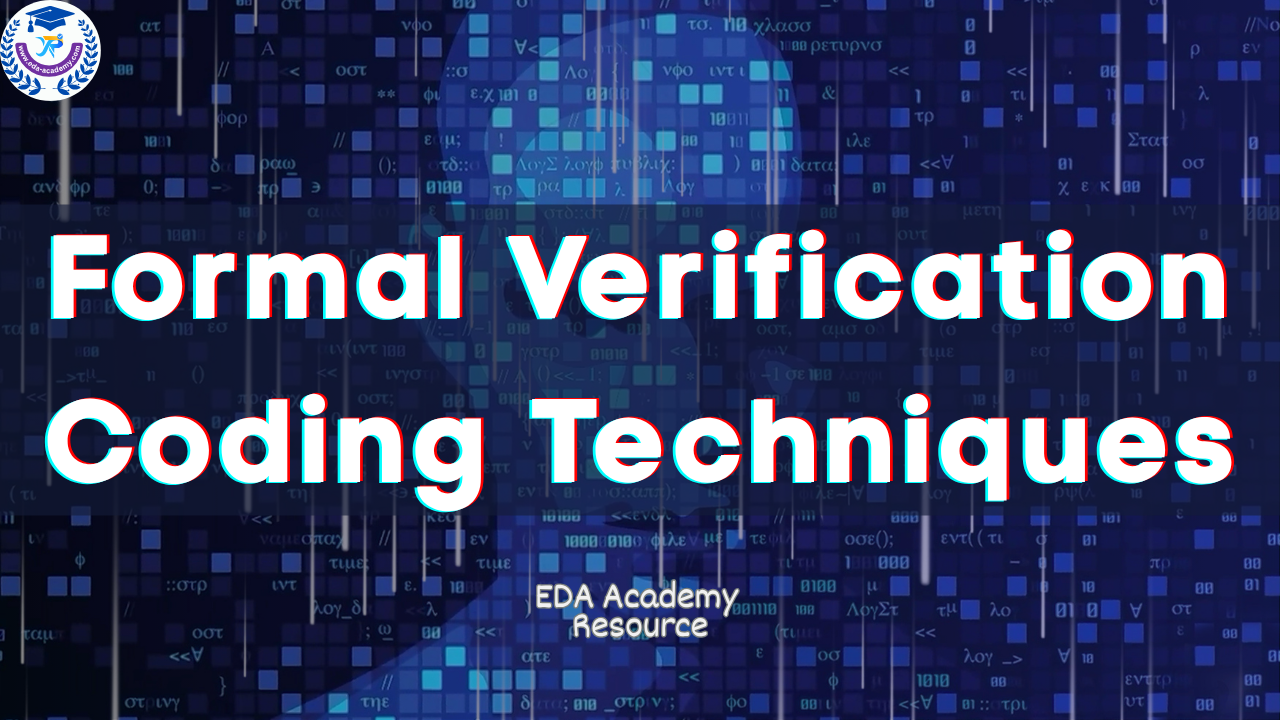Resource:
Formal Verification Coding Techniques (English)
Formal verification coding techniques emphasize the precise and efficient modeling of assertions, assumptions, and coverage properties. Property types are clearly separated to avoid conflicting logic and improve engine efficiency. Assertion simplification, auxiliary code structuring, and abstraction strategies are used to isolate complexity and accelerate proof convergence. Formal observability and controllability are enhanced through modular design, reusable sequences, and effective naming conventions. Efficient formal property modeling balances tool performance, scalability, and debug clarity, enabling robust application in simulation and formal environments.
Purchase
Our course syllabus is regularly updated to reflect the latest advancements and best practices in the field. For individually purchased courses or resources with lifetime access, students can always access the content and receive updates for free. For members, all member-free courses and resources — including future updates — are accessible during the active subscription period. This ensures that both lifetime purchasers and active members can benefit from the most relevant and up-to-date content.
Created by EDA Academy
English
Last updated July 2025

Resource: Formal Verification Coding Techniques (English)
USD $199.9
-55%Today
$89.9
One-time Purchase
& Lifetime Access
What you will get:
1.1 Hours of Immersive, High-Quality Video Lessons
Professionally produced and delivered by our expert team, covering core concepts and practical demonstrations, with step-by-step explanations and real-life examples to help you efficiently absorb knowledge and apply it immediately in a short time.
Certificate of completion
Upon successful completion of the course, you will receive an official certificate issued by EDA Academy, adding value to your resume and career development.
Access on mobile and computer
The course can be viewed anytime on mobile phones, tablets, and computers, allowing you to learn easily whether at the office, at home, or on the go.
Ongoing support from EDA Academy
After the course ends, you will continue to receive ongoing support from our team to help you consolidate knowledge and solve practical problems.
Further learning plan
Provides you with follow-up learning paths and recommended resources, enabling you to continue improving your skills and expanding your career development based on what you have learned.
Resource Catalogue
Description
Efficient formal property modeling plays a critical role in achieving scalable and high-performance formal verification. The structure and clarity of assertions, assumptions, and covers determine how effectively formal engines explore the state space. Assertions define mandatory behavior, assumptions constrain the environment, and covers identify reachable conditions. Misuse of these types can lead to unsound results, over-constrained proofs, or tool failures. Clean separation of property roles ensures predictable analysis outcomes and simplifies debugging.
Property writing efficiency relies on a combination of simplification, modularization, and abstraction. Natural language specifications must be dissected into atomic verification objectives, which are then expressed using minimal and non-redundant logic. Flattening implications, controlling vacuity, and isolating sequences into named structures allow tools to operate more predictively. The divide-and-conquer strategy enables properties to focus on localized design intent, which improves maintainability and allows incremental proof development as the design scales.
Auxiliary code enhances observability and controllability within the formal testbench. Wrappers, helper signals, and monitor logic can encapsulate handshaking protocols, data-path behavior, or state encodings, making assertions more expressive without embedding excessive logic in the property itself. This approach improves trace interpretability and keeps the property syntax clean. However, excessive or misaligned auxiliary code can create signal explosion or inadvertently introduce hidden dependencies. A careful balance must be maintained between abstraction and tool-friendly implementation.
Specific assertion constructs impact formal engine behavior. Overuse of implication chaining, ambiguous sequence endpoints, and deep nesting can significantly increase proof effort. Property completeness, deterministic initialization, bounded checking intervals, and avoidance of nondeterministic signal combinations are critical factors. Recommended modeling patterns include fixed-cycle windows, clearly named sequences, and explicitly triggered checks. Matching coding style to tool architecture improves engine predictability and reduces convergence time.
Consistent modeling techniques support reuse and scalability across projects and platforms. Parameterized assertions, modular testbenches, and standardized abstraction layers enable smooth migration between simulation, formal, and acceleration environments. Systematic verification through reusable property libraries enhances development velocity and verification completeness. Effective formal property coding improves productivity, reduces debug cycles, and enhances confidence in verification signoff. With careful planning, abstraction, and adherence to modeling best practices, formal verification environments become faster, more maintainable, and more powerful.
We HATE spam. Your email address is 100% secure
The document will be emailed to you. Please check your Spam folder if it doesn’t appear in your inbox.
We HATE spam. Your email address is 100% secure
